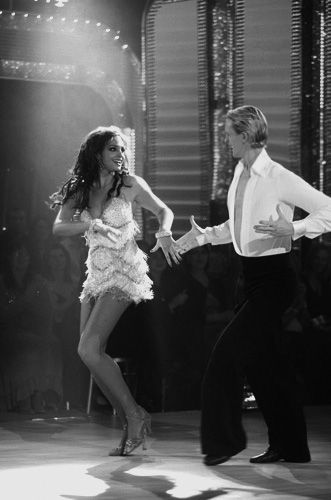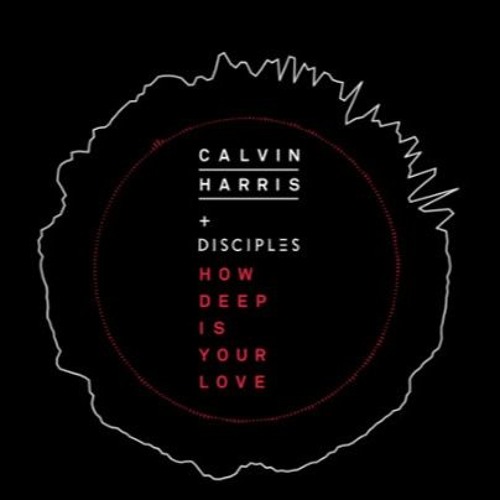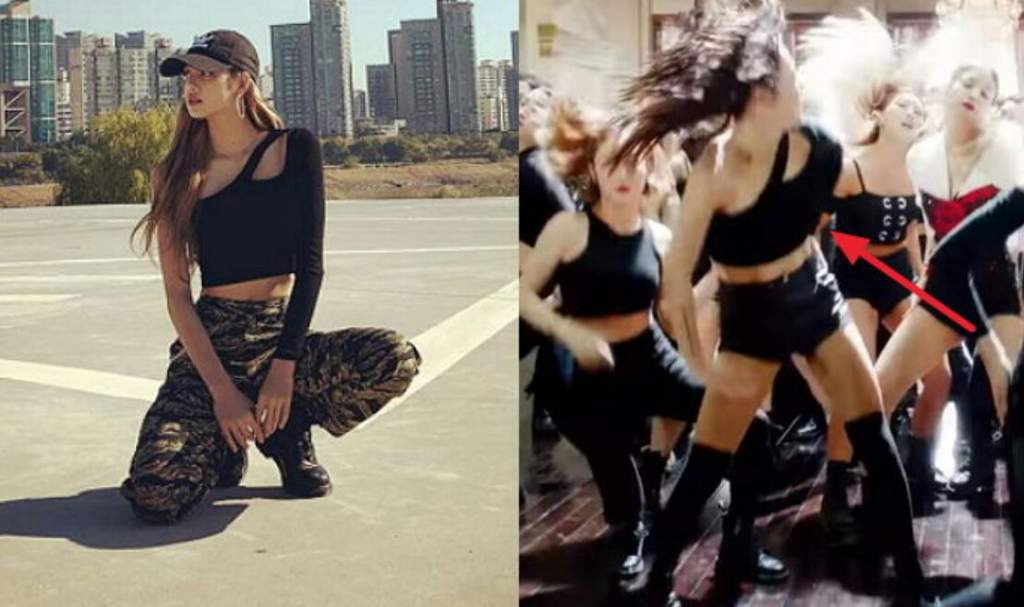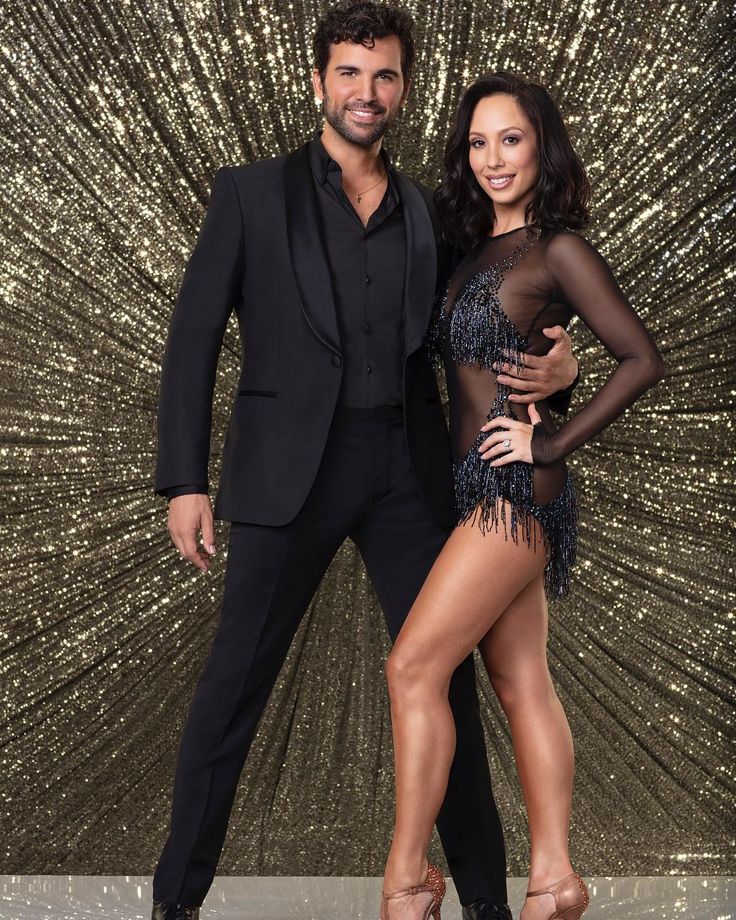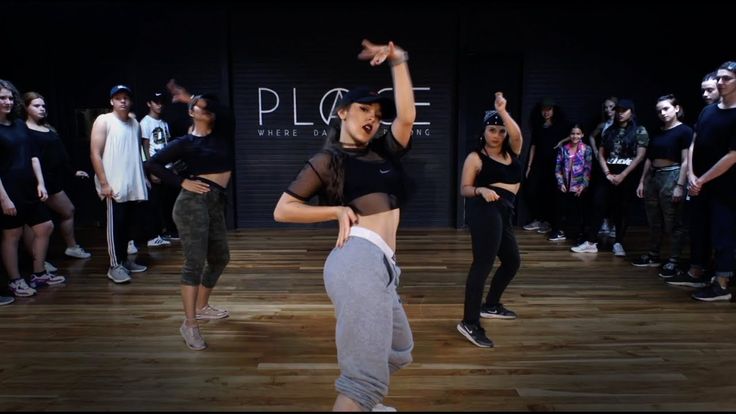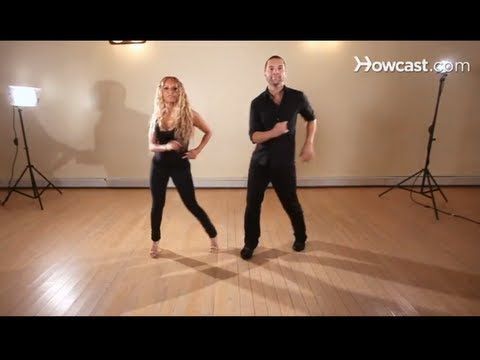How essential is music to dance
The Importance of Music for Dancers — HONG KONG DANCE MAGAZINE
Sheree Brown
Asia, Dance, Education, Tips, Music, Children
Sheree Brown
Asia, Dance, Education, Tips, Music, Children
What do you feel when you hear your favourite song? Do you immediately want to tap your feet to the beat? Sway your body from side to side? Jump up onto the table and belt into your imaginary microphone? Or does it tap into your inner emotions? Perhaps nostalgia, sitting still, steam rising onto the lens of your rose-tinted spectacles from a hot cup of tea.
Happiness, excitement, melancholy, anger…..love.
However music makes you feel, it is, to an extent relatable to absolutely everyone. Now pair it together with dance, where these two elements go hand in hand, a match made in heaven.
Why is music so important for dancers and what does it teach us?
Music stimulates the creativity of the brain and brings with it a sea of imagination. It can help to identify feelings, trigger emotions and portray a mood. A dancer can use these tools to develop their own imaginative movement and/or be able to tap into another person’s or teacher’s choreography.
It is vital for a performer to be able to tell a story through dance. What better way is there to achieve this than with the most fitting piece of music playing alongside, taking the audience on a journey with you. The audience can see the movement, hear the music and feel the atmosphere created by this perfectly harmonious concoction.
Music in dance for children is especially important. Children are able to recognise beats, rhythms and patterns within a song. Furthermore, developing a memory of which specific sound or part goes with what movement. To follow a beat, does the beat stay the same? Does it get faster or slower? Can you clap along to it? Stamp your feet to it? Does the rhythm change? Is it even or accented? Can you count the music?
To follow a beat, does the beat stay the same? Does it get faster or slower? Can you clap along to it? Stamp your feet to it? Does the rhythm change? Is it even or accented? Can you count the music?
A lot of the time dance is a team effort and pieces are performed in groups, so naturally the music and the performers’ knowledge must become fully cohesive to move as one.
How about the dynamic? The light and shade?
These factors can help a child understand why this particular move is sharp or soft, quick or slow, short or prolonged.
Let’s say for instance, within a dance story that there is a very fast and frantic section that suddenly comes to a halt, there is a change of feeling. Now the dramatic music and sharp actions have been replaced with fluid, watery like movements and calm sounds. The changes make sense, they go together. With this understanding you can now ‘DO’ the movement, hear the music and feel the atmosphere.
With so many different genres and styles of music, the creative possibilities are endless.
Being able to listen to a certain piece of music, whether its pop, classical, or jazz…your body can feel it and can create a style. Each person has their own individual interpretation, and there is no wrong or right. Everyone has the right to their own artistic freedom.
This should be encouraged in children to explore, to not be afraid and open their minds.
With music being used alongside dance, children can quickly develop many skills and learn how to carefully and creatively combine the two.
Edited by: Melinda Gaskin
Photo Credits: Background photo created by nensuria - www.freepik.com, Music photo created by jcomp - www.freepik.com, Music photo created by freepik - www.freepik.com, Background photo created by freepik - www.freepik.com
Tagged: Dance, Music, Education, Students, Hong Kong, Children
Here Is The Reason Why Musicality Is Crucial For Dancers | by Ballegro Player
Musicality is a hot topic within every studio practice and rehearsal. Why? Because it is the essence of all movement. It is always present, whether you are listening to the actual progression of notes or the spaces and silences in between.
Why? Because it is the essence of all movement. It is always present, whether you are listening to the actual progression of notes or the spaces and silences in between.
As I began brainstorming for this post, I ended up asking myself the reverse question: What is dance without musicality? The answer I came up with: Nothing. You can choose to dance in all one, legato quality, but this is still a choice and is still a form of being musical. You can choose to dance in silence, but this only heightens the importance of creating musicality inside of your body. You can be still, but even when you are not moving in space there is a buzzing within you, whether it’s an emotion, sensation, thought, or experience. So that is why musicality is important; because even when it is not obviously there, it still exists!
Music is energy.
As dancers, we are often being asked, “Are you listening to the music?” and “How is the music informing your movement choices?”. The music is more than a beat or metronome. It saddened me to hear, when having a discussion with Yawen, the founder of Ballegro, that she often feels that when she accompanies for ballet classes, dancers hear the music as a background soundtrack. If we can tune in (no pun intended) to the musical aspect of dancing, this will make our dancing more exciting for us to explore, and more engaging for the viewer as well!
The music is more than a beat or metronome. It saddened me to hear, when having a discussion with Yawen, the founder of Ballegro, that she often feels that when she accompanies for ballet classes, dancers hear the music as a background soundtrack. If we can tune in (no pun intended) to the musical aspect of dancing, this will make our dancing more exciting for us to explore, and more engaging for the viewer as well!
Music is energy. Music is movement. It is movement of sound and vibration, which physically exists in the space. You would know that this is true if you have ever been in direct contact with the ground near a loud speaker with your bare feet, or stood near a big drum being played. You can physically feel the radiating vibrations! This is precisely why it is always easier for singers to sing in tune with an acoustic piano as opposed to an electronic piano, and why acoustic instruments (as opposed to synthesizers) seem to have more impact on movers.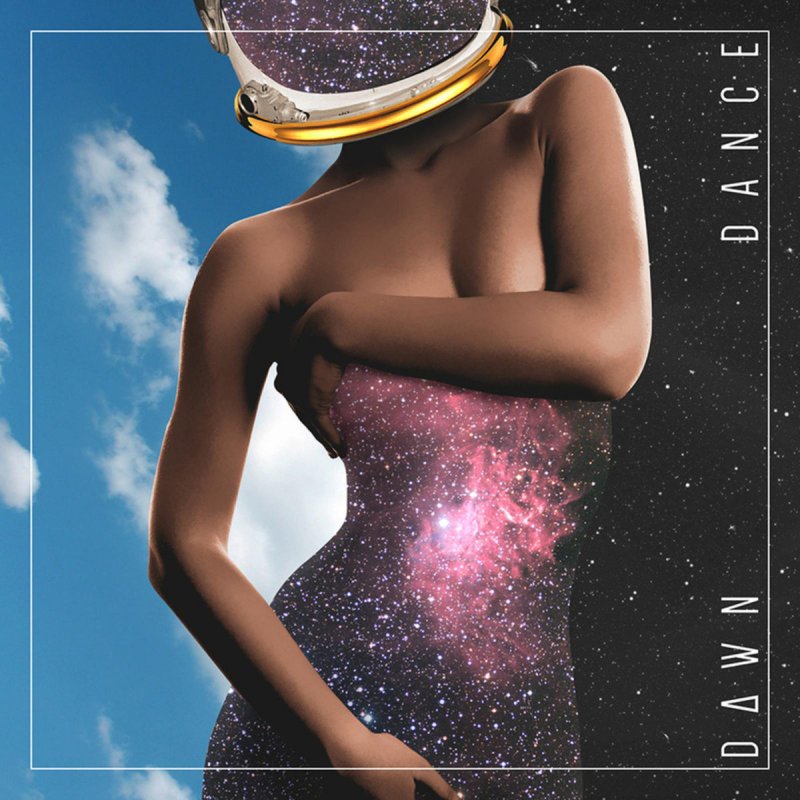 When we learn to move with that unseen energy — that groove — it assists with our own movement. Here is a little experiment: in your fitness class at the gym, try to move WITH the music and to move AGAINST the music; and try to lift some weights when you sync to the rhythm versus to not use music at all. The result is obvious. The moment we learn to utilize music to help with our movement, a feeling of effortlessness becomes present, and we feel that we are doing nothing more than riding on top of the musical waves, allowing the music carries us through it all! Movement is kinesthetic music. Music is sonic movement. They are but the two sides of the same coin.
When we learn to move with that unseen energy — that groove — it assists with our own movement. Here is a little experiment: in your fitness class at the gym, try to move WITH the music and to move AGAINST the music; and try to lift some weights when you sync to the rhythm versus to not use music at all. The result is obvious. The moment we learn to utilize music to help with our movement, a feeling of effortlessness becomes present, and we feel that we are doing nothing more than riding on top of the musical waves, allowing the music carries us through it all! Movement is kinesthetic music. Music is sonic movement. They are but the two sides of the same coin.
Musicality helps movement.
In ballet class, teachers have brought up the idea of how each exercise should spark something different in you. How you execute a Plies exercise is different from Frappes, Grand Battement, Adage, and Pirouettes. The qualities between exercises may be similar, but there is always an aspect that differentiates them; the way you use a Plie differs when it is a part of your Warm-Up exercise, a Pirouette, or for Grand Allegro. Musicality helps movement. It helps the dancer facilitate and access movement in a fresh way. It adds an additional language for you to enrich and incorporate into your vocabulary. It helps you find your own phrasing and dynamics within the context of the choreography. AND, when you are feeling uninspired or in a rut, it can help rekindle your joy and excitement to move!
Musicality helps movement. It helps the dancer facilitate and access movement in a fresh way. It adds an additional language for you to enrich and incorporate into your vocabulary. It helps you find your own phrasing and dynamics within the context of the choreography. AND, when you are feeling uninspired or in a rut, it can help rekindle your joy and excitement to move!
Seeing the bigger picture.
Especially in ballet class, I often find myself getting caught up in all of the little things I am not doing and am wanting to do. Thinking about the musicality of the movement allows me to switch my mindset from a ‘nit-picky’ one, to one where I am envisioning the overarching melody of the music. This translates directly to the melody of the movement and creates the space for adding breaths, pauses, and exclamation points when needed! When I really hear and indulge in the music, it seeps into my body and I find I am having a unified and full-body experience! I am able to connect my focus to my movement, find the oppositional length in my torso, feel my legs drilling into the floor, and activate my pelvis — all by ‘just’ thinking about my relationship with the music! How does this work? I believe it has to do with our ability to make decisions based off of the musicality of the movement as well as the song the accompanist has provided.
Music is directly related to making clear decisions.
This brings me to my next points: music is directly related to making clear decisions. I have recently discovered this for myself as I have been investigating this question in my everyday ballet class. The times when I am able to really listen to the music and indulge in the musicality are the times when I have really figured out what the exercise is: the sequence, the coordinations and relationships of my entire body, and its purpose. Knowing these things allows me to take this next step of being musical.
As I am making decisions of what positions I want to hold longer and which I want to reach quicker, I have found that I have not only become more consistent and able to execute the difficult technical steps, but I have also become more engaged with the exciting task at hand! Playing with the musicality has almost turned into a game I play between the ideas I want to investigate, my bodies ability to translate these into movement, and the music being provided by the accompanist.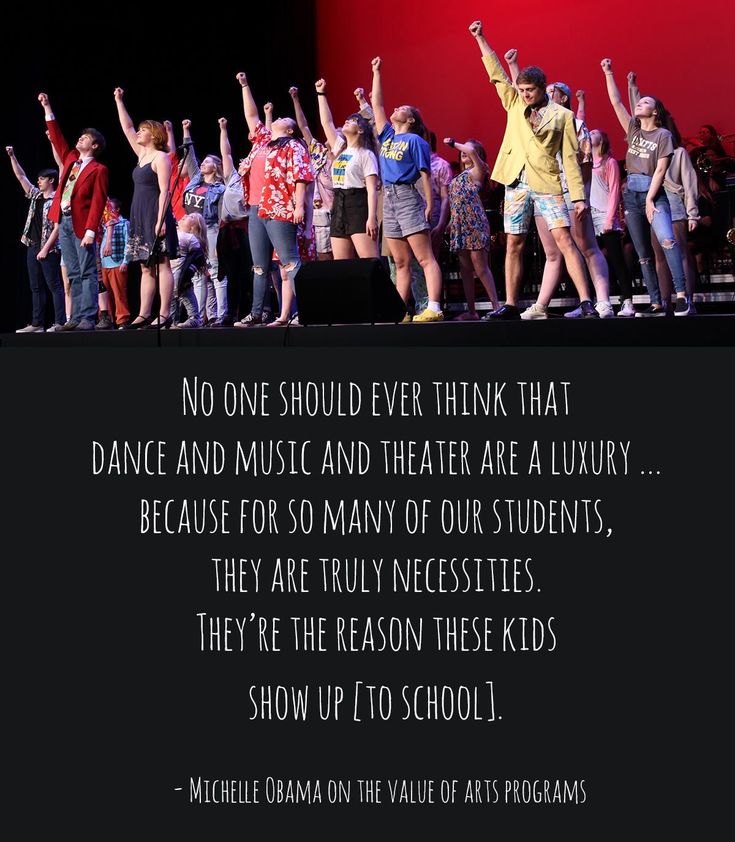 And all of this is accomplished as a result of the informed choices I am able to make.
And all of this is accomplished as a result of the informed choices I am able to make.
Finding internal musicality.
This is a big topic in the studio; identifying how the music can be something that initiates what you are doing, instead of something that is added on top of the pre-existing steps. Even if the choreography is created without the music that will be used, there is always a musical intention. Accessing music from within makes the dynamics and rhythms of the movement come from a much more authentic place. For me, this allows me to access more movement in my back/upper body, as opposed to getting stuck in trying to find more turnout or a higher arabesque.
Finding a deep connection to the music can also help access these technical things that we, as perfectionists, are always craving more of. Music helps us indulge and find the juiciness and fullness in our movement. If this is the case, I don’t see why this can’t help us reach a deeper plie or a longer balance.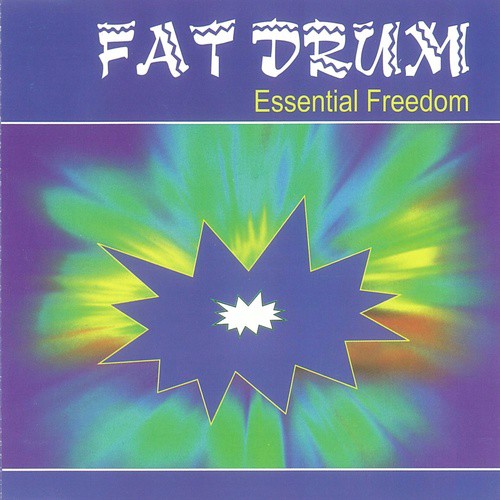 We can use our internal musicality to test our limits by being playful with it.
We can use our internal musicality to test our limits by being playful with it.
Being musical creates dynamics, and being dynamic informs your technique.
As I discussed above, I believe being musical deepens your understanding and connection to technique. For example, part of the technique of a Frappe is a quick striking action, followed by an energetic hold. By understanding this, and by striving for this dynamic attention to detail, you will also access a more technical Frappe! In turn, the most suitable music to accompany Frappes is one with sharp, precise and brisk articulation. Same with Pirouettes; these are often done to a 3/4 Waltz or a 2/4 Tango. A typical 3/4 Waltz groove is that of the “Strong — Weak — Weak” pattern. Utilizing the “sub-beats” in a rhythmic groove can be a magical shortcut to accomplishing your triple (or quadruple!) Pirouettes. For example, by spotting your head on the 3 sub-beats of a Waltz, you will likely have a more dynamic and successful Pirouette! Moreover, when you understand the inherent groove associated with the rhythms in the music, it is much more likely for you to have a successful Pirouette if you: 1) don’t sit too long in your preparatory plie, 2) have a quick rebound from you plie into Passe position 3) sustain this position throughout the turn, and 4) anticipate the suspension and control as you end it. Thus, in order to best execute your Pirouettes, or any technical movement, it is necessary to tap into the musical aspects of the technique.
Thus, in order to best execute your Pirouettes, or any technical movement, it is necessary to tap into the musical aspects of the technique.
The music we listen to feeds us. It affects us whether we know it or not. It can be driving, soothing, melodious, expansive, melancholy or upbeat, allowing us to access different dynamics and qualities. If we are really lucky, we have access to music that will enhance our experience of the movements and even push us to reach new territories we haven’t yet explored. When feeling stuck, uninspired, or out of energy, music can act as a useful hook to pull us out of our rut. It is a fresh way to inspire and ignite us and allow us to really indulge in our movement fantasies!
Why music affects our emotions so much
- David Robson
- BBC Future
Image copyright, Thinkstock
Image caption,Music can evoke a wide variety of feelings and experiences in a person
In an article from the "Ask and Answer" series designed to quench the reader's curiosity, a journalist BBC Future explores the impact of music on people's emotional state.
"Why does music have a direct effect on our emotions? What is the evolutionary meaning of this phenomenon?" asks Philip Loerish, who emailed us his question.
Each person experienced the emotional power of music, which sometimes literally takes our soul.
We can get into a state of euphoria from driving music in some rock club, and listening to a romantic ballad, experience the deep longing of unrequited love...
Music expresses our emotions much more powerfully than words can.
However, as our reader rightly notes, the reasons for this do not lie on the surface.
(Other BBC Future articles in Russian)
"I understand why rhythm can be so appealing, and I also understand anticipation, surprise, fulfillment. All these things explain why music can be interesting But why it affects us at a deep level - it remains a mystery to me," he wrote.
An anthropological riddle
Our reader Philip is not the only one who has asked this question. And by the way, he's in good company.
And by the way, he's in good company.
Even the father of evolutionary theory, Charles Darwin, was puzzled by the human ability to perceive music and called this ability "the most mysterious of those with which [mankind] is gifted."
Some academic thinkers, such as the cognitive scientist Steven Pinker, have even questioned whether there is any special value in music at all.
According to Pinker, we like music only because it stimulates our other, more important abilities - the ability to recognize patterns, for example.
Image copyright, Thinkstock
Image caption,Descending melodic-harmonic sequences tend to have a calming effect on us
Skip the Podcast and continue reading.
Podcast
What was that?
We quickly, simply and clearly explain what happened, why it's important and what's next.
episodes
The end of the story Podcast
In itself, according to Pinker, she is of no value and acts only as an irritant to hearing.
If this were the case, would people all over the world spend so much of their lives playing and listening to music?
If you consider yourself a music freak, compare your obsession with the attitude towards music in the Babinga tribe. This Central African people is known for singing and dancing in every activity, from collecting honey to hunting elephants.
Anthropologist Gilbert Rouget, who lived among the babing in 1946, found that non-participation in the ritual of joint music-making is considered among them the most terrible of crimes.
"Perhaps you cannot express it more clearly that song and food are equally necessary for a person to live, - the scientist noted. - For this reason, many people (including myself) can hardly believe that music is just background soundtrack to the story of human evolution".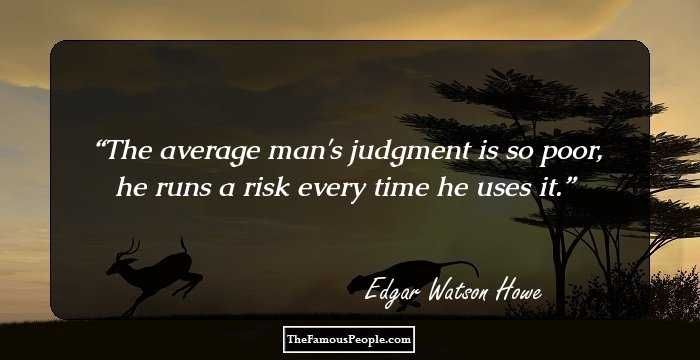
Fortunately, there are alternative theories regarding the purpose of music. According to one particularly popular hypothesis, music arose in response to sexual competition among humans, like the brightly colored tails of peacocks.
Indeed, developed musical abilities make a person more sexually attractive.
However, there is still little evidence for this theory: a recent study of 10,000 twins did not show that musicians are somehow especially lucky in matters of "bed" (Mick Jagger and many other rockers, however, can argue with this).
Image copyright Thinkstock
Photo captionPlaying our heartstrings, music helped us connect emotionally with the world
It is also suggested that music was an early form of human communication. Indeed, some musical motifs carry the emotional codes of our ancestors.
For example, ascending staccato turns us on emotionally, while long descending sequences have a calming effect.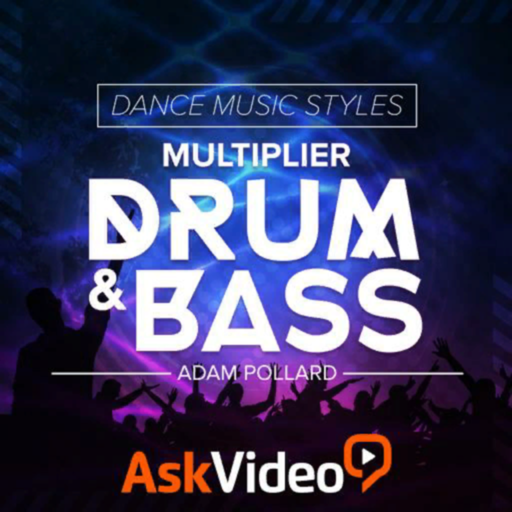 Apparently, certain sound structures contain universal meanings that are equally read by adults of different ages and cultures, small children, and even animals.
Apparently, certain sound structures contain universal meanings that are equally read by adults of different ages and cultures, small children, and even animals.
So it can be said with a high degree of certainty that music arose on the foundation of associations with the cries of birds and animals as a means by which an ancient person who did not yet have a language could express his feelings and emotions. It is even possible that music became the proto-language that paved the way for the appearance of speech.
In addition, at a certain historical stage, music may have helped bring people together in communities. Group dance and sing-along have made people more altruistic and more likely to identify with the community in which they exist.
According to the latest research in neuroscience, when you move in sync with another person, you - thanks to the signals sent to you by the brain - cease to be aware of yourself as something separate.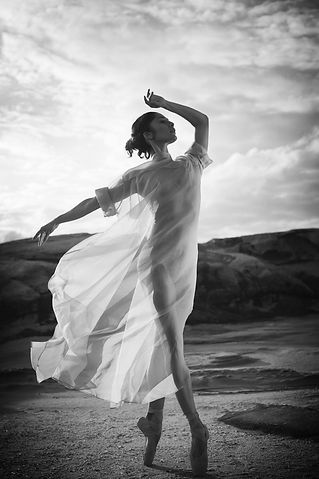
It is as if you are peering into another person in a mirror and recognize yourself in him. Well, as we all know very well from our own bodily reactions, in order to start moving people in unison, there is no better means than music.
However, in order for internal transformations to take place, active physical involvement in music is not at all necessary (although it can enhance the effect).
Emotional contact with the world
If a melody causes pleasant vibrations in the body, simply listening to it is enough to reduce our ego. Sounds reassuring, especially for those whose musical life, like mine, is tied to the couch and iPod.
A group that has more solidarity and less internal strife has a higher chance of surviving and prospering. This was most widely illustrated by the example of the Babinga tribe, with their obligatory daily music-making.
Photo credit, Thinkstock
Photo caption,All human life on Earth is accompanied by a certain musical series
Anthropologist Rouget wrote about babing: one with a group of singers. "
"
The role of music as a social glue can also be seen in the songs that slaves sing at work, as well as the choral songs of soldiers and sailors. It seems that music really brings people together, makes them closer to each other.
Music seems to be at the very foundation of our relationship with the world, and there is a deep sense that, by plucking our heartstrings, it helps us to establish emotional contact with other people and in general with everything that exists.
Each culture can build on this rudimentary instinct in its own way, creating its own lexicon of musical chords and motifs that will become associated with certain feelings and emotions.
Whatever the genesis and original purpose of music, modern people can no longer help but associate it with the important events of their own lives.
Our current existence on Earth - from conception, gestation, birth to burial, with everything that can happen in between - is accompanied by a certain musical range.
And it is no wonder that the sounds of your favorite melodies can give us such a heady cocktail of emotions and memories.
Read the original of this article in English is available on the website BBC Future .
Ask us any question
BBC Future journalists would love to know what topics you care about. If, like our reader Philip, you have questions that you would like us to comment on, please contact us (in English) via Facebook or Twitter or send your question by email to the address of the social media department ( [email protected] or [email protected]).
The role of musical accompaniment in a classical dance lesson
Contents:
Introduction…………………………………………………………………………..3
Interrelation of movements and music………………………………………………………………………………………………………………………………………………………………………………………………………………………………………………………………………………………… …………….18
List of references………………………………………………………………………………………………………………………………………………………………………………………………………………………………………………………………………………………………….
Musical accompaniment of classical dance lessons is a rather complex type of accompaniment. The basis of the material of training tasks here is dance movements, which are elements of stage dance forms. Mastering the ability to accompany types of movements, of course, presupposes a long experience of a musician entering this profession, a deep acquaintance with the art of dance. The relationship of music and movements in choreography lessons are built quite freely, but strictly regulated. The complexity of the accompaniment lies in the fact that the goal of musical and choreographic unity is not only the synchronism of the performance, but also the interaction of the material. Therefore, the level of special training of an accompanist should be high. Accompanists sometimes face such difficult artistic tasks and such great emotional and physical loads that even a very professional musician cannot successfully cope with. The creative atmosphere in the choreographic team does not allow him to be limited to a formal attitude to his duties.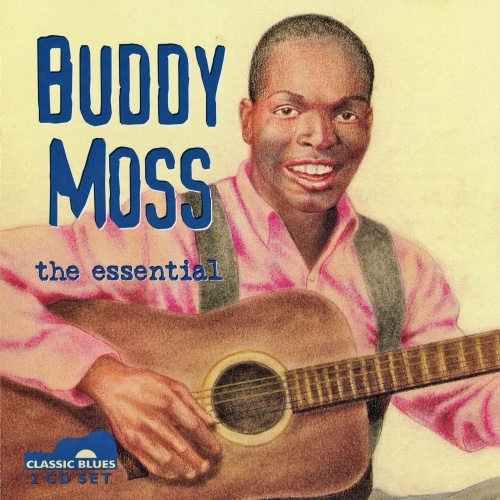
The role of musical accompaniment in a classical dance lesson.
We all know very well that two teachers work with children in the choreography class - a choreographer and a musician (accompanist), so children receive not only physical development, but also musical development. The art of dance cannot exist without music. Music and dance in their harmonious unity is an excellent means of developing the emotional sphere of children, the basis of their aesthetic education. The success of working with children largely depends on how correctly, expressively and artistically the pianist performs music, conveys its content to children. Clear phrasing, bright dynamic contrasts help children hear the music and reflect it in dance movements. The musical design of the lesson should instill in students a conscious attitude to a piece of music - the ability to hear a musical phrase, navigate the nature of the music, rhythmic pattern, and dynamics. Listening to music, the child compares phrases by similarity and contrast, learns their expressive meaning, follows the development of musical images, forms a general idea of the structure of the work, determines its character. Children form primary aesthetic assessments. In choreography classes, students are introduced to the best examples of folk, classical and modern music, and thus their musical culture is formed, their ear for music and figurative thinking develops, which help to perceive music and choreography in unity during production work. The accompanist unobtrusively teaches children to distinguish between works of different eras, styles, and genres. He must make the music created by the great composers-choreographers: Glinka, Tchaikovsky, Glazunov, Strauss, Gliere, Prokofiev, Khachaturian, Kara-Karaev, Shchedrin and others, the property of the dancers.
Children form primary aesthetic assessments. In choreography classes, students are introduced to the best examples of folk, classical and modern music, and thus their musical culture is formed, their ear for music and figurative thinking develops, which help to perceive music and choreography in unity during production work. The accompanist unobtrusively teaches children to distinguish between works of different eras, styles, and genres. He must make the music created by the great composers-choreographers: Glinka, Tchaikovsky, Glazunov, Strauss, Gliere, Prokofiev, Khachaturian, Kara-Karaev, Shchedrin and others, the property of the dancers.
Music is an integral part of the dance and should not be considered only as a rhythmic accompaniment that facilitates the execution of movements. The primary task of a musician-accompanist is to learn and accumulate repertoire. Music should be selected in such a way that the content of the dance combination matches the nature of the music and makes it possible to connect action and movement with music when developing individual episodes. The choice of music affects the quality of a choreographic production, it can contribute to success or be the cause of failure. The leader should not require the accompanist to change the tempo, nuances indicated in the notes, rearrange parts of the musical work, add chords to move from one melody to another. Music must be played the way the composer wrote it.
The choice of music affects the quality of a choreographic production, it can contribute to success or be the cause of failure. The leader should not require the accompanist to change the tempo, nuances indicated in the notes, rearrange parts of the musical work, add chords to move from one melody to another. Music must be played the way the composer wrote it.
In children's groups, music should be accessible and understandable in content and form. It is necessary to ensure that in the classroom the children carefully listen to the musical accompaniment, feel and correctly reproduce it in movements.
An accompanist working together with a teacher-choreographer needs to approach the lesson creatively, skillfully select musical literature. A lesson, for example, of classical dance is a kind of kaleidoscope, a mosaic of choreographic combinations, different in character, performance technology and types. During the lesson, the accompanist performs up to 40-50 musical constructions of a simple two- or three-part non-reprise or reprise form. From a musical point of view, the suite principle of construction is closest to this compositional structure. The versatility of the plastic material, the contrasting juxtaposition of the characters of choreographic combinations and etudes can be emphasized by the variety of keys, metrics, rhythmic patterns, intonations, textures of the accompaniment. Moreover, the general compositional scheme of the lesson allows you to build a certain dynamically directed and closed form, the culmination of which, as a rule, is the Big Adagio in the middle, and the Allegro section, animated in tempo, is the final part. The result of the work on the selection of works for an open show, performance at an exam or class concert should be a well-arranged and uniform in style suite-divertissement musical composition. The tonal plan, the circle of intonations, the comparison of metro-rhythmic structures, the tempo plan must be thought out and verified. Such a suite can be assembled from the works of one or a number of composers close in style.
From a musical point of view, the suite principle of construction is closest to this compositional structure. The versatility of the plastic material, the contrasting juxtaposition of the characters of choreographic combinations and etudes can be emphasized by the variety of keys, metrics, rhythmic patterns, intonations, textures of the accompaniment. Moreover, the general compositional scheme of the lesson allows you to build a certain dynamically directed and closed form, the culmination of which, as a rule, is the Big Adagio in the middle, and the Allegro section, animated in tempo, is the final part. The result of the work on the selection of works for an open show, performance at an exam or class concert should be a well-arranged and uniform in style suite-divertissement musical composition. The tonal plan, the circle of intonations, the comparison of metro-rhythmic structures, the tempo plan must be thought out and verified. Such a suite can be assembled from the works of one or a number of composers close in style. Most often these are representatives of the romantic direction, authors of theatrical opera and ballet music, such as P. Tchaikovsky, A. Glazunov, L. Delibes, A. Adam, J. Bizet, C. Gounod, J. Meyerbeer and others. In addition to reading books, the accompanist in his repertoire searches can refer to ballet, orchestral, vocal and piano works, opera music, opera divertissements. As a rule, the work on creating a composition is done in close creative contact with the choreographer, and the built form reflects the joint result of the efforts of cooperation.
Most often these are representatives of the romantic direction, authors of theatrical opera and ballet music, such as P. Tchaikovsky, A. Glazunov, L. Delibes, A. Adam, J. Bizet, C. Gounod, J. Meyerbeer and others. In addition to reading books, the accompanist in his repertoire searches can refer to ballet, orchestral, vocal and piano works, opera music, opera divertissements. As a rule, the work on creating a composition is done in close creative contact with the choreographer, and the built form reflects the joint result of the efforts of cooperation.
Exercise at the barre and in the middle of the hall can be performed to musical improvisation. Improvisational music must also correspond to the composition given by the teacher, have a certain rhythmic pattern, the nature of movements. For example, plie, demi plie, grands plie (fr.) is an exercise based on squats of different amplitudes: a half squat or a full, deep squat. This means that the musical accompaniment is of a smooth, soft nature at a slow pace (meter 4/4, 3/4). Or battements tendus (battements tendus jetes) - putting the foot forward on the toe (or a sharp little throw). In these exercises, there is a sharp extension of the leg forward, to the side, back, and its return to the position. Therefore, the musical accompaniment must be very clear. The musical size for both exercises is 2/4, 4/4. If, for example, battements fondu is performed in the same composition with battements frappe, then the rhythmic pattern of the musical phrase will be different in nature: smooth, melodious when performing battements fondu and sharp, jerky when performing battements frappe.
Or battements tendus (battements tendus jetes) - putting the foot forward on the toe (or a sharp little throw). In these exercises, there is a sharp extension of the leg forward, to the side, back, and its return to the position. Therefore, the musical accompaniment must be very clear. The musical size for both exercises is 2/4, 4/4. If, for example, battements fondu is performed in the same composition with battements frappe, then the rhythmic pattern of the musical phrase will be different in nature: smooth, melodious when performing battements fondu and sharp, jerky when performing battements frappe.
. As the main musical material for accompaniment to the final parts of the lesson, dance music by various composers is performed: fragments of ballets or piano, symphonic, vocal works. The frequent use of repertoire works, apparently, is explained by the fact that ballet music has a certain aura of the stage - its perception is associated with a whole range of theatrical attributes: light, scenery, costumes, an applauding audience, a feeling of high spirits, etc. all this together creates a certain mood and atmosphere of the dance. Often, as educational tasks, teachers offer specific material for studying choreographic repertoire. Obviously, the most suitable accompaniment here may be the performance of the corresponding fragments of ballet music. Therefore, the ballet accompanist needs to study the maximum number of repertory musical fragments and be ready to perform them in class. In the event that the accompanist knows the choreography of the classical heritage well, he can take the music of the quoted work on his own, without the teacher's prompting.
all this together creates a certain mood and atmosphere of the dance. Often, as educational tasks, teachers offer specific material for studying choreographic repertoire. Obviously, the most suitable accompaniment here may be the performance of the corresponding fragments of ballet music. Therefore, the ballet accompanist needs to study the maximum number of repertory musical fragments and be ready to perform them in class. In the event that the accompanist knows the choreography of the classical heritage well, he can take the music of the quoted work on his own, without the teacher's prompting.
Konstantin Sergeev, Artistic Director of the Choreographic School. AND I. Vaganova, says this about the work of an accompanist in a choreographic class: “The profession of a ballet accompanist is, first of all, with its specificity, a combination of various aspects of performing skills and abilities. Here you need, on the one hand, to be well versed in the artistic nature and genre basis of the art of ballet, to love it, on the other hand, to master the instrument perfectly, read the ballet clavier fluently from the sheet, and even the score, and still be able to improvise on the piano. It is the joint comprehensive and comprehensive development of all aspects of concertmaster activity by music and choreography specialists that is the surest way to success.” Concertmasters of choreography in our region are not trained in any educational institution. But choreographic art has its own specific requirements that have to be comprehended in practice. The work of a beginner choreography accompanist is divided into two parts: mastering the musical material associated with the teaching of a particular discipline and its choreographic specificity. Mastering the musical specifics of the basis of the subject is possible only with a parallel study of the specifics of choreographic art.
It is the joint comprehensive and comprehensive development of all aspects of concertmaster activity by music and choreography specialists that is the surest way to success.” Concertmasters of choreography in our region are not trained in any educational institution. But choreographic art has its own specific requirements that have to be comprehended in practice. The work of a beginner choreography accompanist is divided into two parts: mastering the musical material associated with the teaching of a particular discipline and its choreographic specificity. Mastering the musical specifics of the basis of the subject is possible only with a parallel study of the specifics of choreographic art.
First of all, you need to know dance terminology in order to know what kind of exercise you are talking about. Musical terms are of Italian origin, and choreographic terms are of French origin. Therefore, the accompanist must understand the teacher-choreographer in order to choose the right musical accompaniment for a particular exercise. Secondly, you need to know how this or that exercise is performed. In order to clearly imagine the structure of the exercise, imposing a piece of music on it, it is correct to emphasize, to help the movement with dynamic shades. And the most important thing is to learn how to correlate this exercise with the musical material - to be able to navigate in the musical text. The fact is that the teacher can stop the exercise at any place or start practicing any part of the exercise separately. And for this you need to know from which place in the musical material to play the passage to practice this or that movement. Thirdly, the accompanist works in an ensemble with dancers. Proper work in an ensemble is a necessary quality in accompanist practice. When playing, one must be clearly aware that the pianist is not an independent performer, but through his playing helps to penetrate deeper into the emotional structure of the dance. The accompanist should contribute to the development of the activity of children's musical perception, their inclusion in the process of co-creation.
Secondly, you need to know how this or that exercise is performed. In order to clearly imagine the structure of the exercise, imposing a piece of music on it, it is correct to emphasize, to help the movement with dynamic shades. And the most important thing is to learn how to correlate this exercise with the musical material - to be able to navigate in the musical text. The fact is that the teacher can stop the exercise at any place or start practicing any part of the exercise separately. And for this you need to know from which place in the musical material to play the passage to practice this or that movement. Thirdly, the accompanist works in an ensemble with dancers. Proper work in an ensemble is a necessary quality in accompanist practice. When playing, one must be clearly aware that the pianist is not an independent performer, but through his playing helps to penetrate deeper into the emotional structure of the dance. The accompanist should contribute to the development of the activity of children's musical perception, their inclusion in the process of co-creation. The attention of an accompanist is a multidimensional attention. It will be distributed not only between two own hands, but also relative to the dancers. At each moment of performance, it is important what and how the fingers are doing, how the pedal works, what the children are doing at the moment, what the teacher requires, where to help the movement with tempo, accent, dynamic shades, etc. You need to keep the whole class in sight at all times. During the performance, it is necessary to take into account the different physical abilities of the pupils. This is especially important when the pupils perform the same movement one at a time. Here the problem of the tempo correspondence of the choreographic performance and its musical accompaniment appears. Every child has their own pace, for good reason. One pupil, say, has a small jump, stability is not great. The other, on the contrary, has a magnificent aplomb (balance), a natural ability to jump high. Performing one movement, they cannot perform it in the same way.
The attention of an accompanist is a multidimensional attention. It will be distributed not only between two own hands, but also relative to the dancers. At each moment of performance, it is important what and how the fingers are doing, how the pedal works, what the children are doing at the moment, what the teacher requires, where to help the movement with tempo, accent, dynamic shades, etc. You need to keep the whole class in sight at all times. During the performance, it is necessary to take into account the different physical abilities of the pupils. This is especially important when the pupils perform the same movement one at a time. Here the problem of the tempo correspondence of the choreographic performance and its musical accompaniment appears. Every child has their own pace, for good reason. One pupil, say, has a small jump, stability is not great. The other, on the contrary, has a magnificent aplomb (balance), a natural ability to jump high. Performing one movement, they cannot perform it in the same way.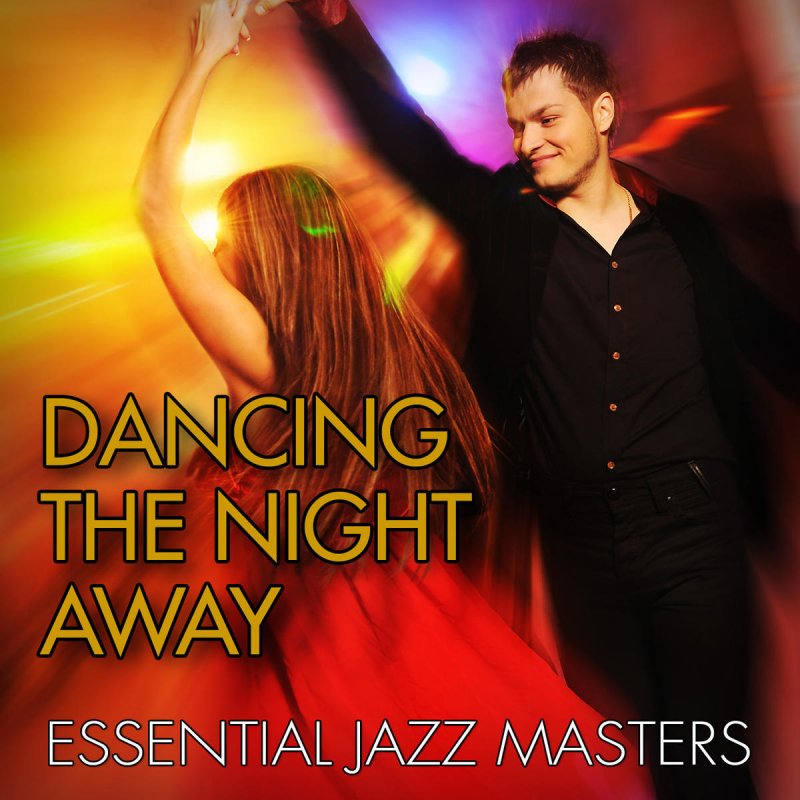 Therefore, the sound content of each part should also be different. It's not that the former needs to play faster and the latter slower. Both paces can be uncomfortable for pupils. We are talking about the presence of microdoses in deviations from the optimal tempo, about those subtle, almost imperceptible gradations that are present in the performance of each dancer.
Therefore, the sound content of each part should also be different. It's not that the former needs to play faster and the latter slower. Both paces can be uncomfortable for pupils. We are talking about the presence of microdoses in deviations from the optimal tempo, about those subtle, almost imperceptible gradations that are present in the performance of each dancer.
Musical accompaniment instills aesthetic taste in pupils, a conscious attitude to a piece of music - the ability to hear a musical phrase, helps to navigate the nature of music, rhythmic pattern, dynamics. The entire lesson of classical dance is based on musical material. The transitions from exercises at the barre to exercises in the middle of the hall and back, as well as bows at the beginning and after the end of the lesson, are musically designed so that the students get used to organizing their movements in concert with the music. It is music, well chosen, that allows you to avoid a formal approach to the simplest exercises from the first lesson. Musical support of the lesson is a matter of paramount importance. It is during a successive series of classes that the child is accustomed to a kind of melodic thinking. But no matter what the pupil does, exercise or dance, it is necessary to choose extremely clear melodies, especially at the first stages of training. Attention should be paid to the execution by the pupils of "preparations" - preparation for the exercise. So that the children do not “miss” it, as often happens, the accompanist must perform the introduction in the tempo and rhythm of the entire further exercise. The introduction can be taken from the end of the piece of music (2 or 4 measures from the end, depending on the time signature) or you can compose it yourself. The same applies to the end - the completion of the exercise. Usually, the last two chords of the piece are taken, or "dominate" and "tonic" relative to the key of the piece. Undoubtedly, all the performance of music in the classroom must be professional.
Musical support of the lesson is a matter of paramount importance. It is during a successive series of classes that the child is accustomed to a kind of melodic thinking. But no matter what the pupil does, exercise or dance, it is necessary to choose extremely clear melodies, especially at the first stages of training. Attention should be paid to the execution by the pupils of "preparations" - preparation for the exercise. So that the children do not “miss” it, as often happens, the accompanist must perform the introduction in the tempo and rhythm of the entire further exercise. The introduction can be taken from the end of the piece of music (2 or 4 measures from the end, depending on the time signature) or you can compose it yourself. The same applies to the end - the completion of the exercise. Usually, the last two chords of the piece are taken, or "dominate" and "tonic" relative to the key of the piece. Undoubtedly, all the performance of music in the classroom must be professional. Movements must reveal the content of the music, correspond to it in composition, character, dynamics, tempo, metro-rhythm. Music evokes motor reactions and deepens them, not only accompanies movements, but determines their essence. Thus, the task of the accompanist is to develop the "musicality" of dance movements.
Movements must reveal the content of the music, correspond to it in composition, character, dynamics, tempo, metro-rhythm. Music evokes motor reactions and deepens them, not only accompanies movements, but determines their essence. Thus, the task of the accompanist is to develop the "musicality" of dance movements.
As his skill grows, the accompanist becomes more and more active and flexible member of the musical and choreographic ensemble. Accompanying, he strives to create the most favorable musical conditions for students, however, of course, the result is always achieved by the combined efforts of all its participants - both the musician and the dancers. Therefore, the most important goal of the joint creative work of a teacher and an accompanist, along with the implementation of other professional tasks of teaching, is to develop a sense of rhythm and musicality. Effective work in choreographic classes is possible only in the collaboration of a teacher-choreographer and a musician. And here we can talk about a subjective position, because psychological compatibility, personal qualities of the accompanist and choreographer play no small role. For real creativity, an atmosphere of friendliness, ease, mutual understanding is needed. It is important that the accompanist be a friend and partner. Only from the standpoint of a creative approach, it is possible to implement all the ideas, to have high performance in the performance activities of students of choreographic classes. The cooperation of the musician-accompanist and teacher, their mutual understanding and professionalism will create fruitful conditions for achieving these goals.
And here we can talk about a subjective position, because psychological compatibility, personal qualities of the accompanist and choreographer play no small role. For real creativity, an atmosphere of friendliness, ease, mutual understanding is needed. It is important that the accompanist be a friend and partner. Only from the standpoint of a creative approach, it is possible to implement all the ideas, to have high performance in the performance activities of students of choreographic classes. The cooperation of the musician-accompanist and teacher, their mutual understanding and professionalism will create fruitful conditions for achieving these goals.
Interrelation of movements and music.
In classical ballet, as a synthetic form of art, the constituent elements - the complex of movements of classical dance and the means of musical expression - form various kinds of relationships.
Genuine musicality in dance lies not only in the right feeling, but also in a clear understanding of the basic laws of musical art - its melodic, harmonic, polyphonic, constructive, dynamic logic.
A performer with such genuine musicality never runs the risk of "breaking away" from the music. But at the same time, music will never arbitrarily keep him “at the barline”, fetter his performing initiative, hamper the manifestation of the dancer’s creative individuality in his personal manner of choreographic “intonation”. Only when this stage of development of musicality is reached will the performer dance freely, i.e., not so much "in the music" as "counterpunctuating the music." And at the same time - not only not to violate anything, but, on the contrary, to reveal its ideological and emotional content more deeply by the freedom of its performance. Then the synthesis of the dance and acting solution of the stage image will become really accessible to the dancer, due to the nature of its prototype - the musical image created by the composer.
The foregoing determines the importance of developing genuine musicality, a conscious attitude to the factor of music in the choreographic class, both for the teacher, and for the accompanist, and for students. The active cooperation of the teacher and the accompanist, their desire to create a fruitful creative atmosphere for classes, is the key to the future success of students.
The active cooperation of the teacher and the accompanist, their desire to create a fruitful creative atmosphere for classes, is the key to the future success of students.
One of the methods for solving this problem is the education of hearing, its precise and stable “tuning”. Along the way, this should be the education of musical taste. Otherwise, the ear, being physically trained even to the point of becoming the so-called absolute, will remain creatively inactive, receptive to the sound, to the acoustic, but not to the artistic side of music, to the external - rhythmic, dynamic, but not to the internal - figurative and emotional.
Decisions on this issue are entirely the responsibility of the accompanist: a selection of musical material, the best examples of classical and instrumental music, excerpts from ballet claviers. The performing talent of an accompanist plays the most important role in classical dance lessons. Listening to wonderful music in a beautiful performance, children receive great aesthetic pleasure, they are inspired, and a powerful emotional return comes from them.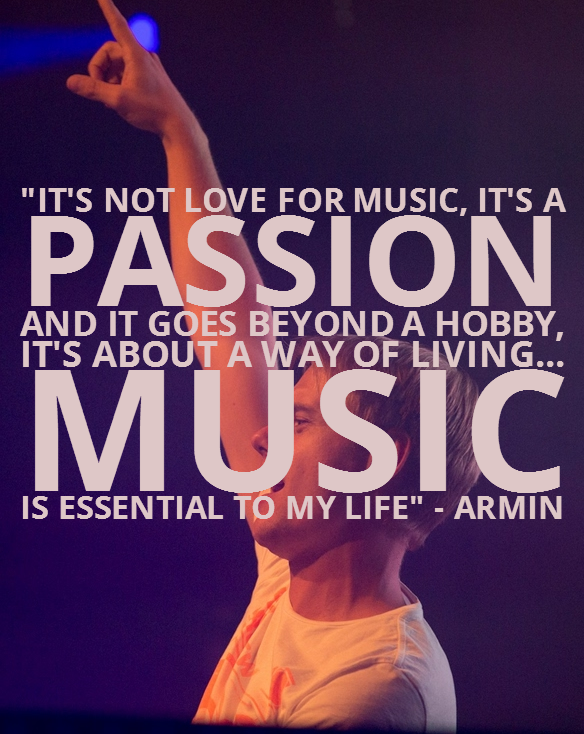
A prerequisite in the initial classes of choreography is the selection of the simplest musical examples in terms of structure, means of expression, as well as their consistency within the framework of good musical taste. The teacher and accompanist noted that in the first three years of study, the criteria for good taste are the assimilation of grammar and syntax of musical art - this is clarity, intelligibility, completeness of the melody, purity of voice leading, natural, logically justified selection of euphonious harmonies, distinctness, "visibility" of meter-rhythmic formulas. Examples should be varied in the nature of the melody, in the details of rhythm and meter, in texture - even in relation to the same movements in different lessons. The frequency of repetition of an example leads to a mechanical memorization of it by ear, to the fact that the movement from a meaningful corresponding to music will turn into a kind of "reflex". A variety of examples is also necessary in order to accustom children from the first years of training to the diverse changes in the character of music applied to the same movements.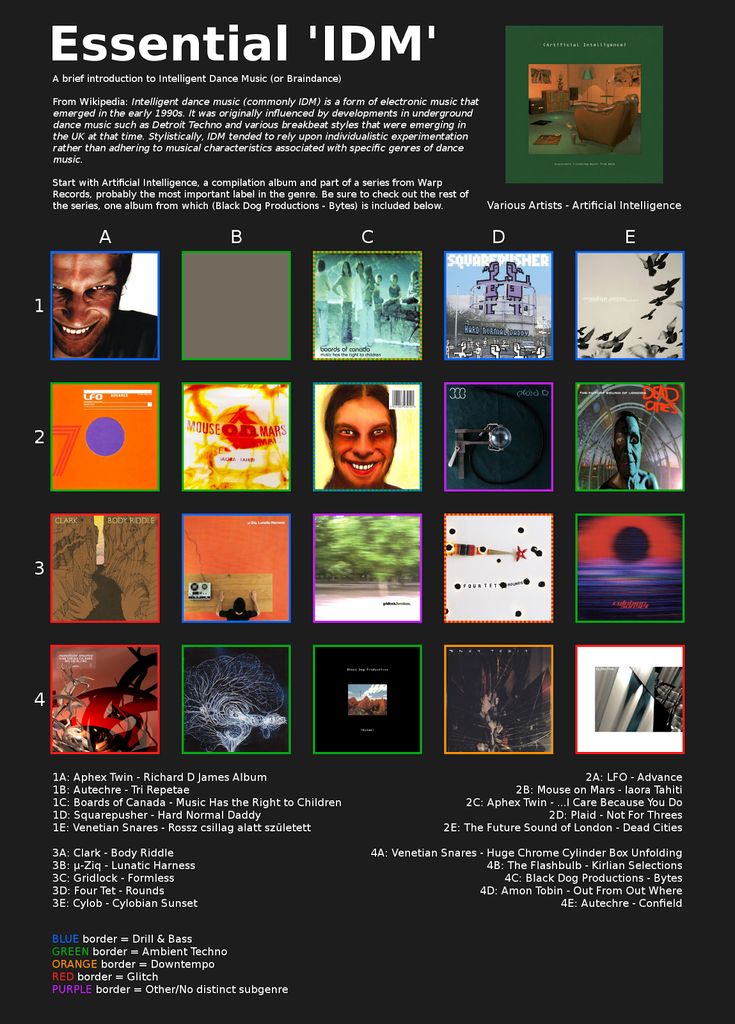
The musical development of students is carried out by us on the basis of a wide acquaintance with the best examples of classical musical literature by listening to music, analyzing its content and form. Systematic visits to theaters and concerts, the improvement of methods of studying piano playing can hardly be overestimated in this sense.
At the lessons of classical exercise, from the very first steps of training, children get acquainted with music for the first time, its connection with movement. Therefore, it is extremely important to give students a correct idea of the principles and patterns of this connection from the very beginning. In this regard, the role of a classical exercise lesson, decorated with music, is very important. In the development of the general musicality of students, it is of great educational importance.
Close cooperation between a classical dance teacher and a pianist who creates its musical arrangement leads to the most effective education of the artistic thinking of future performers. To develop the musicality of students and consciously comprehend the principles of the connection between music and dance, to instill in them the skills of coordinating movement with music.
To develop the musicality of students and consciously comprehend the principles of the connection between music and dance, to instill in them the skills of coordinating movement with music.
The musical accompaniment of a classical exercise lesson organizes all movements in time, under conditions of a certain tempo and rhythm. Music itself reveals the features of the dance movement: its pattern, character, dynamics, phrasing, etc., that is, everything that will later become a means of conveying the ideological, figurative and emotional content of the dance.
In connection with the above, I would like to emphasize that in educational practice the definition of “musical accompaniment” of a lesson is common. It should be discarded as not fully meeting its purpose and reducing the role of music in the lesson to the level of a narrow-metric accompaniment. It should be replaced by the term "musical arrangement" of the lesson.
The musical arrangement of the lesson should be understood as a musical composition, clothed in a complete form, built in character, phrasing, rhythmic pattern, dynamics in full accordance with the dance movements and merging with them into one whole.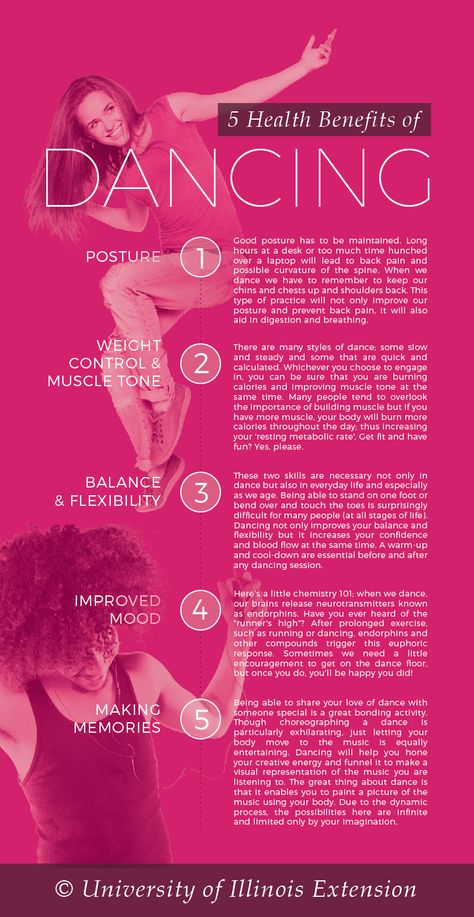 This composition emphasizes all the features of this dance movement by means of its musical characteristics and thus helps the student to creatively improve the quality of his performance. In other words, a classical dance lesson is a kind of kaleidoscope, a mosaic of choreographic combinations, different in character, performance technology and types. During the lesson, the accompanist performs up to 40-50 musical constructions in a simple two- or three-part non-reprise or reprise form. Obviously, from a musical point of view, the suite principle of construction is closest to this compositional structure. The versatility of the plastic material, the contrasting juxtaposition of the characters of choreographic combinations and etudes are emphasized by the variety of keys, metrics, rhythmic patterns, intonations, textures of the accompaniment. Moreover, the general compositional scheme of the lesson allows you to build a certain dynamically directed and closed form, the culmination of which, as a rule, is the Big Adagio in the middle, and the Allegro section, which is animated in tempo, is the final part.
This composition emphasizes all the features of this dance movement by means of its musical characteristics and thus helps the student to creatively improve the quality of his performance. In other words, a classical dance lesson is a kind of kaleidoscope, a mosaic of choreographic combinations, different in character, performance technology and types. During the lesson, the accompanist performs up to 40-50 musical constructions in a simple two- or three-part non-reprise or reprise form. Obviously, from a musical point of view, the suite principle of construction is closest to this compositional structure. The versatility of the plastic material, the contrasting juxtaposition of the characters of choreographic combinations and etudes are emphasized by the variety of keys, metrics, rhythmic patterns, intonations, textures of the accompaniment. Moreover, the general compositional scheme of the lesson allows you to build a certain dynamically directed and closed form, the culmination of which, as a rule, is the Big Adagio in the middle, and the Allegro section, which is animated in tempo, is the final part.
With the gradual complication of movements and dance combinations, the musical arrangement is also enriched; tempos are accelerating, voice leading, drawing, harmonies, etc. are becoming more diverse.
Thus, the musicality of students is gradually developing.
One of the most important moments ensuring the coherence of the coordinating actions of a dancer and a musician is articulation as a way of continuous or separate sound extraction. Articulation in choreography is a way of mastering space through movement, it is quite legitimate to use the concept of articulation in two areas - musical and choreographic.
The musical meter, which creates a periodic pulsation of strong beats, is the main organizing factor that organizes the choreographic material. If we consider the choreographic material outside the music, we can see that the pattern of movements may not be periodic. Quite often, the choreographic material gives the impression of orderliness only in perception simultaneously with the music.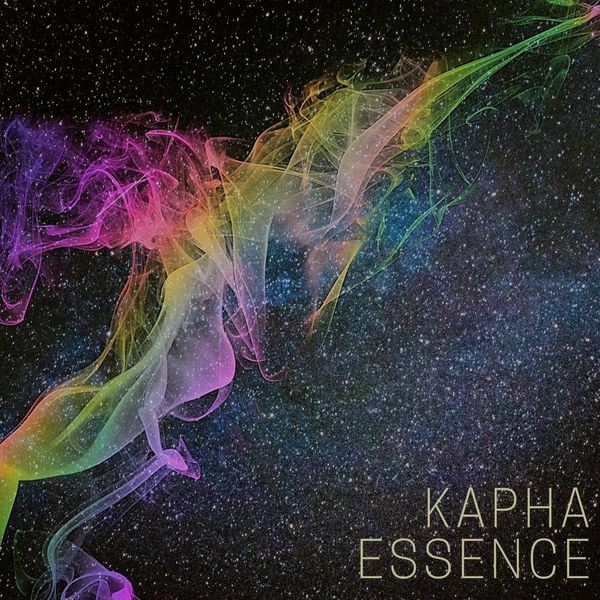 One of the main reasons for this is the fact that the metrical characteristics of the choreographic material contain a quantitative side (that is, the amount of time required to perform a particular movement), but often there is no qualitative side of the meter - the periodicity of accents. It is the musical meter that, with the help of a uniform “dotted” underlining of the main points of movement, plays an organizing role, creating an effect of order.
One of the main reasons for this is the fact that the metrical characteristics of the choreographic material contain a quantitative side (that is, the amount of time required to perform a particular movement), but often there is no qualitative side of the meter - the periodicity of accents. It is the musical meter that, with the help of a uniform “dotted” underlining of the main points of movement, plays an organizing role, creating an effect of order.
To comprehend the coordinating properties of musical and choreographic means, it is necessary to consider other qualitative categories that allow us to correlate the choreographic and musical aspects.
Coordination and interaction of elements of musical and choreographic language is carried out by the method of rhythmic assimilation. Each movement from the arsenal of ballet steps can be matched with its rhythmic equivalent, its rhythmic formula, and thus a certain degree of correspondence between the musical and choreographic sequences will be established.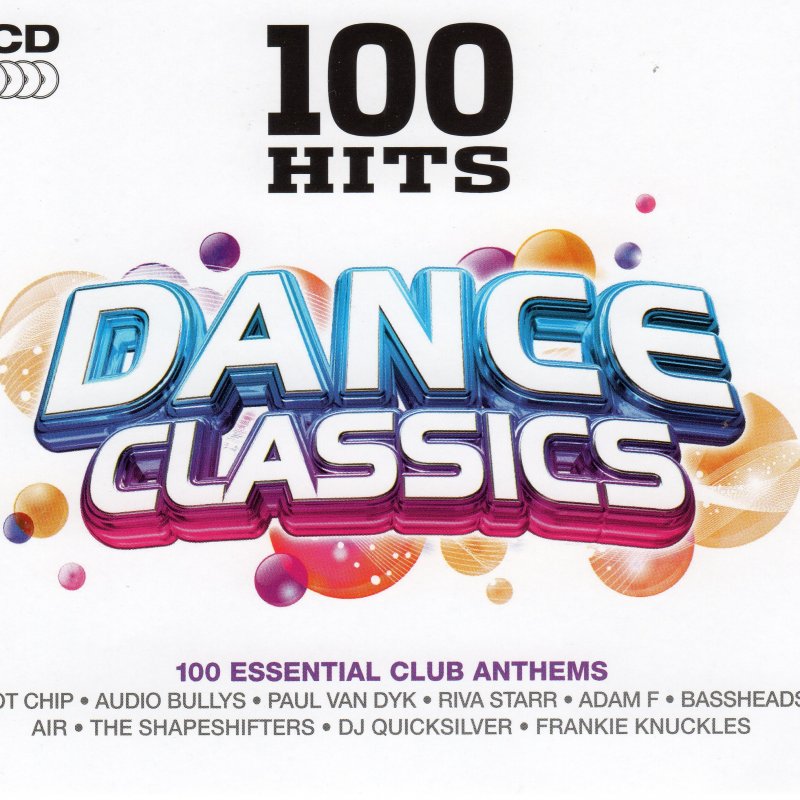 A similar method was widely used and is used in our classical dance lessons.
A similar method was widely used and is used in our classical dance lessons.
The piano design of a classical dance lesson involves the use of the principles of rhythmic similarity, the rhythmic equivalents of movements in our case are intonational-rhythmic complexes.
Conclusion.
In the method of classical dance, the systematization of various movements is carried out according to the principle of performance technology, that is, according to the types of movements, however, systematization by the nature of the performance is also allowed (smooth, jerky, sharp, dynamic, etc.). According to the nature of the performance, all movements of classical dance can be divided into two large groups: movements performed smoothly, smoothly passing one into another - and movements performed clearly, separately, sometimes sharply, sometimes accentuated. These two modes of performance can be logically and naturally correlated with similar basic musical touches (legato and non legato).
It should be noted right away that in most cases we are talking about leg movements, since it is leg movements that determine the articulatory characteristics of movements (hand movements are almost always smooth - leading or lagging).
It should be noted that the range of unity and separateness (as articulatory characteristics of movements) has a huge number of gradations: from the absolute “legato”, the smooth movement of wide breathing, overcoming the uniform metric of regular accentuation, to the lightest and sharpest or sharply accentuated movements.
In connection with the above, it is necessary to establish conscious analogies between the motor instructive nature of exercise exercises and the formulas of pianistic technique. For success, it is necessary to understand dance as the sum of certain variable elements and their close relationship with music - one of the main principles of choreography.
List of references
1. Bezuglaya G. A. “Accompanist of the ballet: Musical accompaniment of a classical dance lesson.
